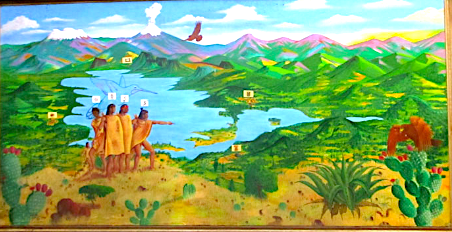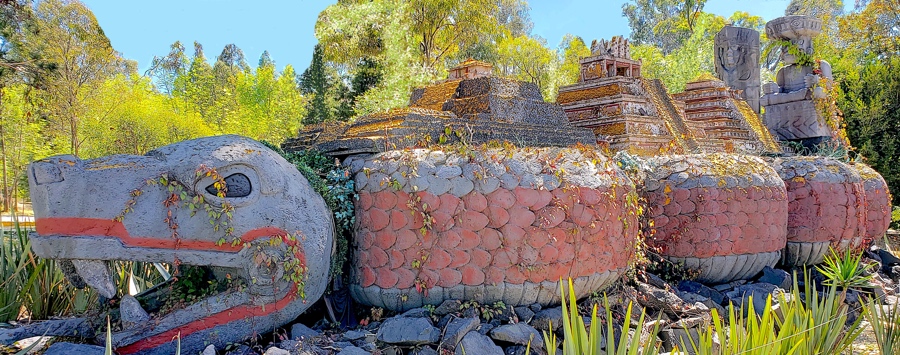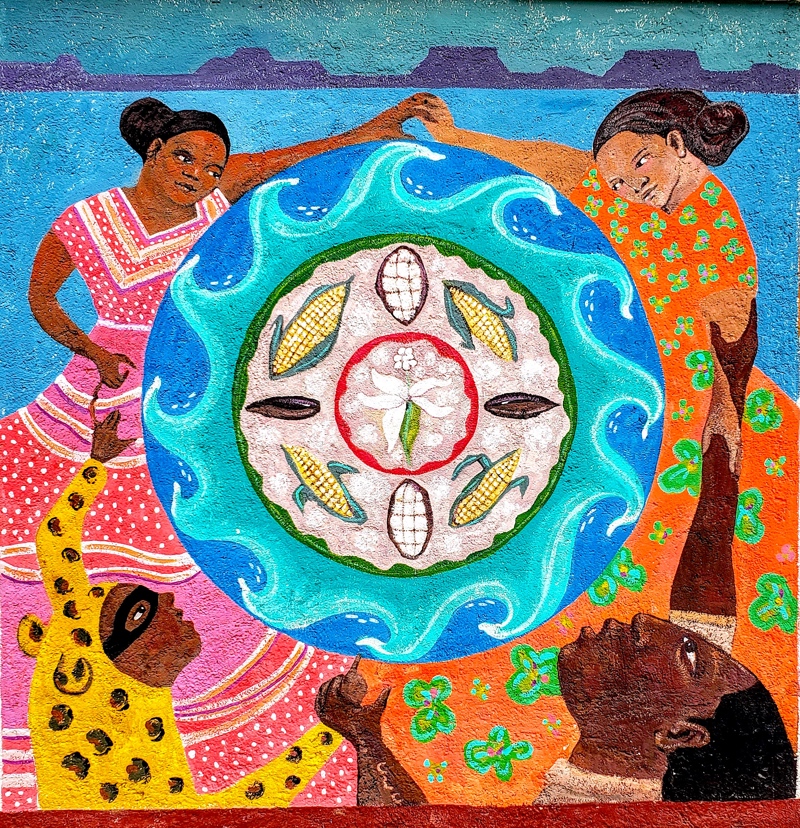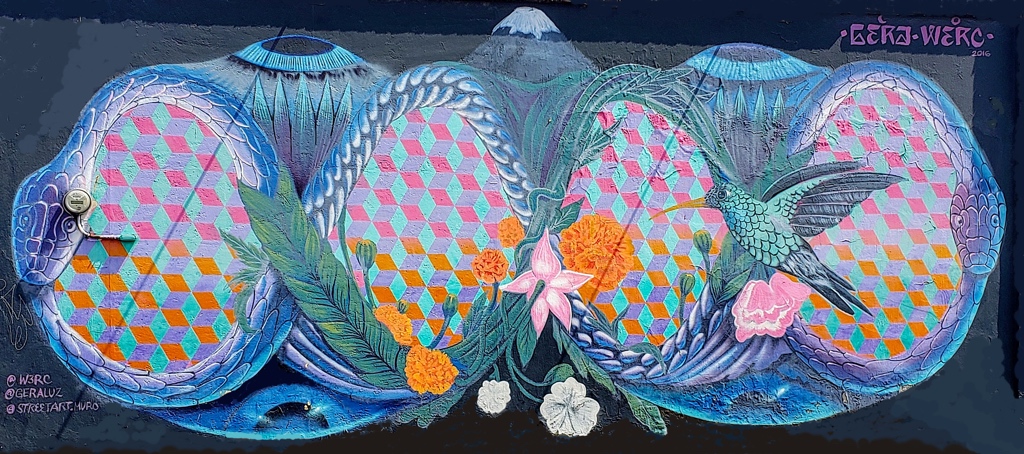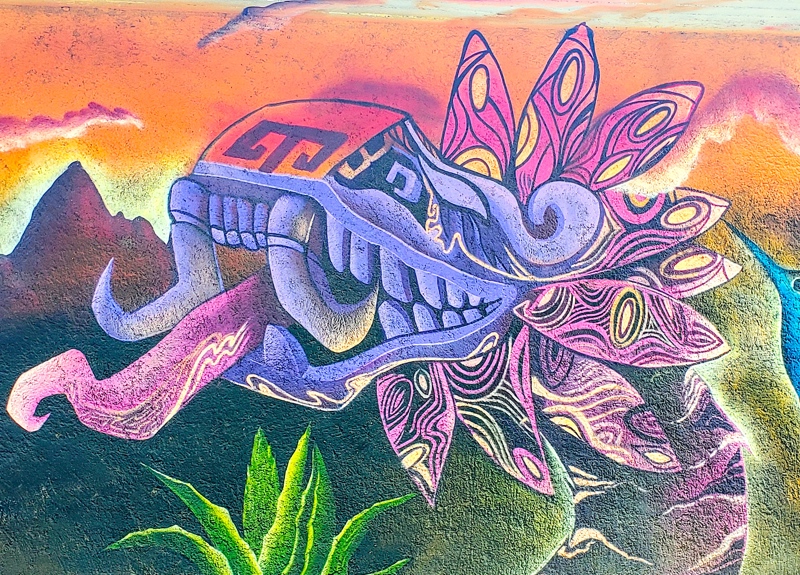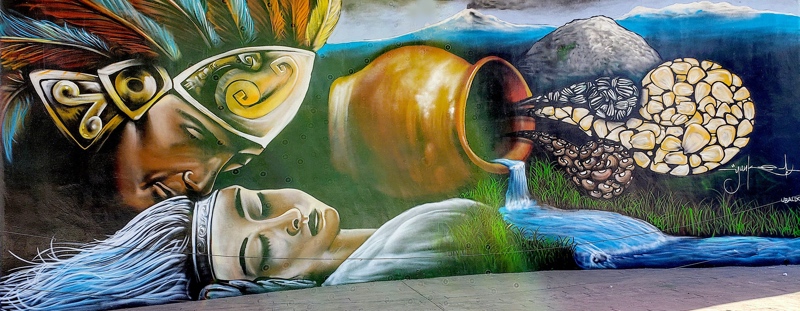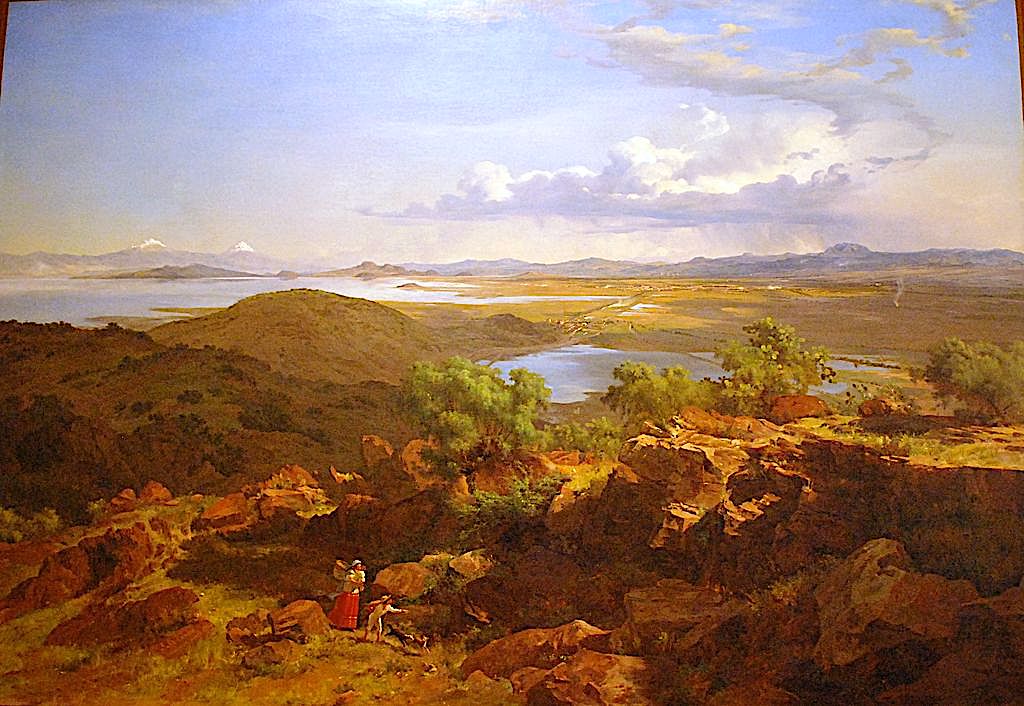Let’s play! Today will will explore who the Aztec were and how they founded a city in a most unusual place that would become one of the largest and most beautiful city in the world.
| If you find my work worthwhile, drop me a few 🪙🪙🪙 It will allow me to keep writing content like this! |
Aztecs were the last ones to migrate into the Valley of Mexico about 750 years ago. For the last 200 years they were on a pilgrimage. Aztec most important deity God of War and Sun Huitzilopochtli sent them in search for a site of a great city. Huitzilopochtli told that they will know the spot when they see an eagle with a snake in its beak perched atop a cactus.
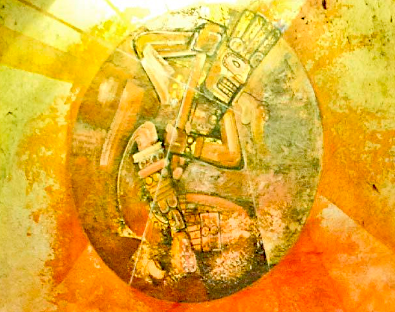
Guillermo Ceniceros “Del Códice al Mural” (detail)
Tacubaya subway station
Seven original tribes left on the pilgrimage from the arid lands in the North of the valley. 200 years of wandering around is a long time! They learned along their journey: how to search for food and water, how to hunt and how to trade. They were poor if you only measure their belongings. And they did not speak the valley language when the tribes finally stumbled into it from the north.
Quest #1: Visit the Tacubaya subway station (line 1, 7, and 9). Locate mural Guillermo Ceniceros "Del Códice al Mural". It depicts the pilgrimage of the Aztec from their departure from Aztlán to their arrival in the Valley of Mexico. Can you find Huitzilopochtli? What animal represents the Earth?
The valley of Mexico supported many tribes living around the lakes at the time of Aztecs arrival. The locals continued to practice the ancient codices (painted books with mystical and spiritual laws of the world and life) of Toltecs, even though it was roughly 500 years after the collapse of the Toltec civilization and the Toltec practices were somewhat degraded.
Remember QuetzalCóatl or Feathered Serpent and his promise to return? He was part a bird and part a snake. And, what about Huitzilopochtli’s sign for showing the site of a future great city? It was an eagle with a snake in its beak. Coincidence?
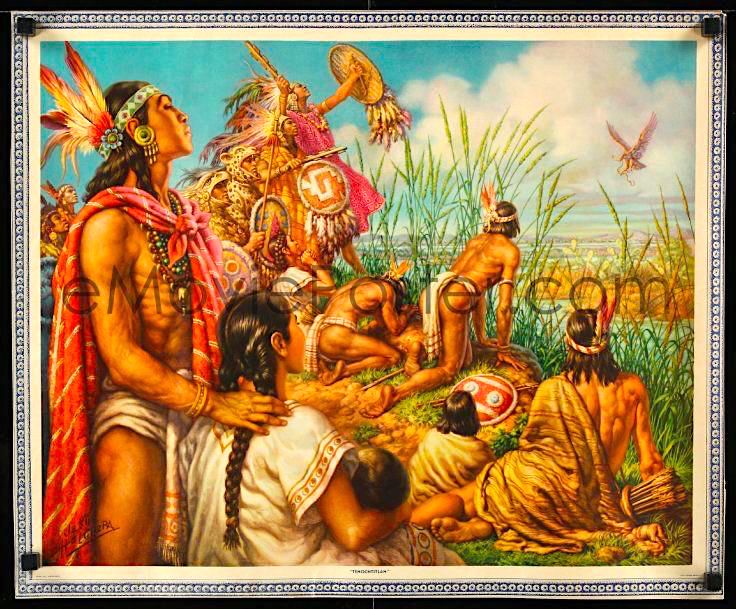
Source
In the first 50 years after their arrival, Aztecs traveled through the valley, learned the local language, the ancient codices and gods of Toltecs, adapted to whatever was left from the Toltec culture, made alliances and enemies, and, finally in 1325, they fulfilled the prophecy. Aztecs witnessed an eagle with a snake in its beak perched atop a cactus. There, they settled, founding a City of Tenochtitlán. This prophecy is now immortalized in Mexico’s coat of arms and on the Mexican flag.

Via Wikipedia Commons

via Wikipedia Commons
Quest #2: While walking around the Historic Center main square, locate a fountain that depicts the moment of the prophecy fulfillment. How many Aztecs are in the composition?
Quest #3: (Bonus) Visit the Hidalgo subway station (line 2) and the Zócalo subway station (line 2). Look for decorative panels with murals that depict the pilgrimage of the Aztec from their departure from Aztlán to their arrival in the Valley of Mexico. Can you find the Mexico's coat of arms?
And, remember to take at least one picture with the most important symbol of Mexico. Here is my picture. What is yours?

Do you like my posts? What until you see my quests! If you ever decide to visit Acadia National Park, check out my book available on Amazon as paperback and Kindle editions. Buy a book, change a life! Thank you for your support and patronage.
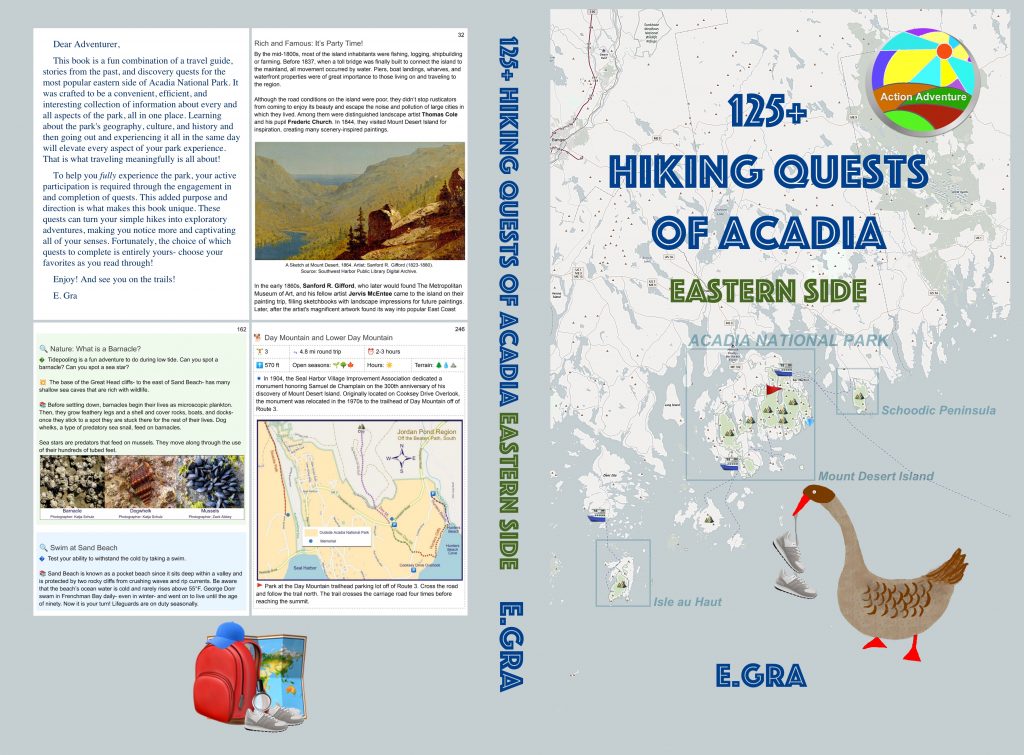
Copyright © 2022 by E.Gra. Unless otherwise noted, all rights reserved. Unless otherwise indicated, no part of this work may be reproduced, or transmitted in any form or by any means without the author’s prior written consent.


